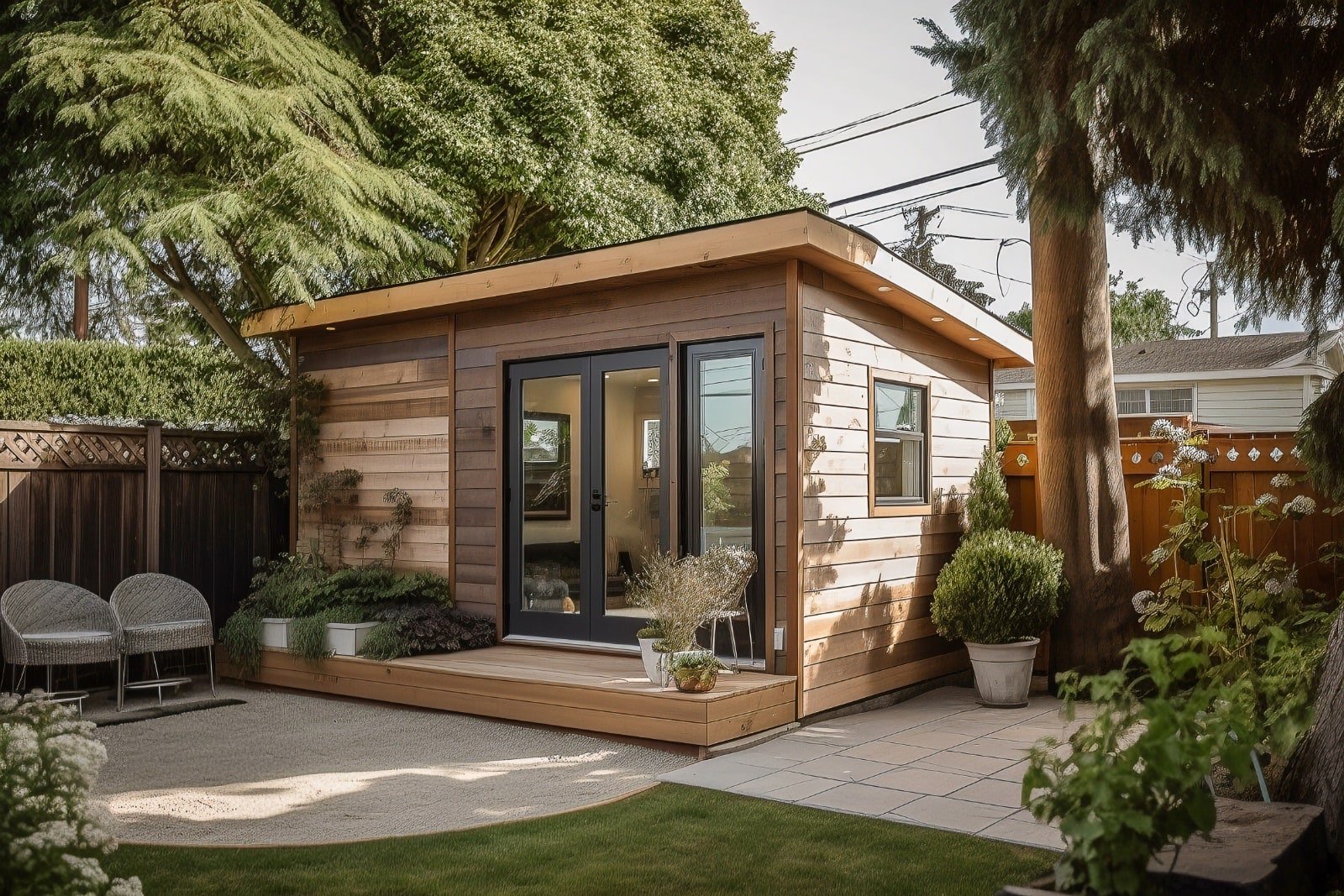Building an Accessory Dwelling Unit in Santa Cruz County: A Comprehensive Guide
With the rising demand for affordable housing options, Accessory Dwelling Units (ADUs) – also known as “in-law units” or “granny units” – have become an increasingly popular solution, particularly in Santa Cruz County. By adding an ADU to your property, you can not only enhance your living space but also significantly increase your property’s value. This comprehensive guide will walk you through the key considerations and steps involved in designing and building an ADU in Santa Cruz County.
Introduction to ADUs
An Accessory Dwelling Unit (ADU) is an additional, self-contained housing unit that resides on the same lot as your primary residence. As per the minimum requirements, an ADU should include a kitchen, a bathroom, and a sleeping area. The kitchen should be equipped with a countertop, cooking appliances, a space for refrigeration, and a sink. The size of an ADU can vary, ranging from as small as 150 square feet to as large as 1,200 square feet, depending on specific zoning and individual needs.
Why Build an ADU?
There are numerous reasons why homeowners choose to build an ADU. For some, it provides a separate living space for family members, a home office, or a rental unit. With the steep rise in rental prices, ADUs have become an attractive option for homeowners looking to generate extra income.
Moreover, ADUs also offer a solution to the housing crisis in Santa Cruz County, where home values and rental prices are significantly higher than the national average. By adding an ADU to your property, you not only increase your property’s value but also contribute to alleviating the local housing shortage.
Building an ADU in Santa Cruz with Om-Design
In February of 2024 I recorded a discussion with Anais Schenk of Om Design, discussing various aspects of building Accessory Dwelling Units (ADUs) in Santa Cruz County. Here’s a summary of the key points:
- Introduction: Sebastian Frey initiates the conversation by discussing the purpose of the meeting, which is to record a discussion about ADUs in Santa Cruz County for future reference and to assist clients interested in ADUs.
- Backgrounds: Both participants introduce themselves. Anais Schenk runs a small business in Santa Cruz and Austin, Texas, specializing in designing and permitting additions, remodels, and new constructions, with a focus on ADUs.
- Legislation and ADUs: They discuss Senate Bill 9 (SB9), which allows property owners to split single-family lots and build up to four units, subject to certain restrictions. This legislation is part of California’s efforts to address housing shortages by facilitating the construction of ADUs and other housing units.
- Permitting Process: Anais explains the streamlined permitting process for ADUs, which requires local entities to respond within 60 days. She mentions that the actual process, from design to permit, typically takes about a year due to various factors, including design time, engineering, and local government processing times.
- Costs: The conversation covers the costs associated with building ADUs, including construction costs (ranging from $200,000 to $600,000 for high-end finishes) and soft costs (10-15% of construction costs). They also discuss hidden costs, such as utility upgrades and impact fees.
- Design and Size: Anais advises that ADUs should architecturally match the main house and mentions that while cities must allow ADUs of at least 800 square feet, many places permit larger sizes, with 750 square feet being a sweet spot for avoiding certain fees and restrictions.
- Challenges: They discuss various challenges in building ADUs, such as environmental constraints, utility upgrades, and local regulations, including parking requirements and limitations in coastal zones.
Types of ADUs
ADUs can come in various forms, each offering unique benefits depending on your available space and specific needs:
-
- Conversion ADUs: These units are converted from existing structures, such as garages or basements.
- Attached ADUs: Attached ADUs are like an addition to the main house but are completely separate units.
- Detached ADUs: If you have a large lot, a detached ADU may be the best option for you. These are stand-alone structures that offer more privacy.
- Junior ADUs (JADUs): These are smaller units, less than 500 square feet, that can share a bathroom with the main property.
Santa Cruz County ADU Webinar
For years, Santa Cruz County did everything it could do deny attempts by property owners to build ADUs on their property. However, they really came around once the housing crisis reached calamitous proportions and the State of California forced Santa Cruz and every other county and municipality to allow property owners to construct ADUs. Santa Cruz County is now much more helpful when it comes to developing ADUs in the county, and even provides a recorded webinar to help people understand the process. The webinar is below, and here is what is discussed:
- Overview of ADUs and JADUs: The webinar provides a general overview of various types of Accessory Dwelling Units (ADUs) and Junior ADUs, discussing common terminology, design considerations, and cost factors based on the type of unit.
- Building Strategies: Different methods for constructing ADUs are explored, including traditional on-site construction and prefabricated/modular options. Factors influencing the choice include site conditions and access for prefab units, with cost comparisons between custom-built and prefab strategies.
- Types and Requirements of ADUs: The presentation covers detached and attached ADUs, highlighting requirements like separate entrances, kitchens, bathrooms, and heating systems. It also discusses junior units, which are smaller and may share amenities with the main house, and garage conversions as popular ADU projects.
- Cost and Feasibility Factors: The costs of building ADUs are discussed, with emphasis on variables like site conditions, design, and utility connections. There’s also a note on the increasing costs due to remote work trends and housing demand in Santa Cruz.
- Septic Systems and Permits: The webinar addresses the importance of septic system considerations in ADU development, including types of systems, setbacks, and the necessity of permits. It highlights the use of GIS tools for property research and emphasizes the need for professional evaluations and compliance with environmental health regulations.
Santa Cruz County ADU Permitting Requirements
Building an ADU in Santa Cruz County requires a building permit, along with architectural drawings, energy calculations, and green building calculations. However, recent laws (SB-9) enacted in California have made the process of building ADUs simpler and more straightforward.
For instance, you can now build an ADU that’s at least 800 square feet while also building a smaller JADU attached to your primary property, regardless of your lot size. Moreover, outside the Coastal Zone, no parking is required for an ADU, and parking spaces removed to accommodate an ADU need not be replaced.
The County of Santa Cruz has a pretty complete web page that will let you browse designs, estimate fees and costs, answers to frequently asked questions and much more. It’s a fantastic place to start if you’re interested in building an ADU in Santa Cruz County. Check out that page here.
Building an ADU in Santa Cruz County under SB-9
SB-9, also known as the “California Housing Opportunity and More Efficiency (HOME) Act,” plays a significant role in the development of Accessory Dwelling Units (ADUs) in California. This bill, which became effective on January 1, 2022, aims to address the state’s housing shortage by making it easier to build additional housing units on single-family zoned properties.
Key aspects of SB-9 relevant to building an ADU in Santa Cruz County include:
- Duplex Conversion and Lot Splitting: SB-9 allows homeowners to convert their single-family homes into a duplex or to split their residential lot to build additional housing units. This makes it more feasible to add ADUs or junior ADUs (JADUs) on these properties.
- Streamlined Approval Process: The bill requires local governments to approve eligible housing projects and lot splits without a lengthy review process, provided they meet certain criteria. This streamlines the process of adding ADUs or converting existing structures into living spaces.
- Reduced Restrictions: SB-9 limits the ability of local governments to impose strict zoning, lot size, and design standards that previously made it difficult to build ADUs. This includes reductions in setback requirements, parking requirements, and other regulatory barriers.
- Increased Housing Density: By enabling the creation of duplexes and lot splits in areas zoned for single-family residences, SB-9 effectively increases housing density. This can lead to more affordable housing options in high-demand areas.
- Local Control: While SB-9 sets statewide standards, it still allows for some local control. Local governments can apply objective zoning, subdivision, and design review standards, as long as they do not conflict with the intent of the bill to facilitate housing development.
It is important to understand the ramifications of SB-9 for all Santa Cruz County homeowners and homebuyers. This legislation can impact property values, offer new opportunities for property development, and affect the overall housing market in the area. Now that Californians have the right to build an ADU on virtually any single-family zoned parcel, it is more important than ever to consider which parcels are practical to put an ADU on.
Designing your ADU
When designing your ADU, it’s important to consider how it will blend with your existing home. The design should fit in with the style and look of the surrounding property and neighborhood to maintain property values and keep neighbors happy. You should also consider the level of privacy you want for your ADU. This will largely depend on whether you plan to rent out the ADU or use it for family members.
Many people will be interested in buying a pre-fabricated ADU and have it brought on truck to your property and installed onto a foundation which you’ve had built for it. In this case, you literally pick an ADU design from a catalog, choose some finishing materials (e.g. flooring, counters, appliances), and you’re done
There are a number of “off the shelf” ADU designs on the county of Santa Cruz website which you can browse through. The City of Santa Cruz has some “prototype ADU” designs on its website you can look over, as well as an Accessory Dwelling Unit Manual available for download.
ADU Construction Costs
The cost of building an ADU can vary widely, depending on its type, size, design, and the specific requirements of your property. A garage conversion is usually the least expensive option, while a custom, standalone ADU is more costly. Even a garage conversion however can be expensive, depending on where the garage is relative to existing plumbing and sewer connections, for example.
Building a stand-alone detached ADU is more expensive than most people realize. There are many factors that you need to consider, such as grading (flattening out the land), retaining walls, driveway / parking, tree work, drainage, trenching for water, sewer, and power – building a stand-alone ADU is just like building a small house, and you will many of those same costs (except, of course, you already own the land).
Typical construction costs in Santa Cruz County for residential applications start around $350 per square foot for very rudimentary construction. And these are only the costs for the structure itself, and do not include any of the additional work I just mentioned (grading, trenching, drainage, etc.). On top of this, there will be a number of soft costs such as soil tests, design, permitting, and others. While it may be possible on the low end to build a small pre-fab ADU for $250,000 most people will end up spending quite a bit more than that – perhaps $500,000 or more depending on the size of the ADU and the challenges posed by the site itself.
It is important to also consider that if the parcel is not served by a public sewer, getting a permit to build an ADU will also require sign-off from the Santa Cruz County Department of Environmental Health for the ADU’s sewage disposal needs.
Septic Considerations when Building an ADU in Santa Cruz County
In Santa Cruz County, building an ADU on a property with a septic system involves adhering to specific health and environmental regulations. The key factor is ensuring that the existing septic system can accommodate the additional load from the ADU, or if necessary, upgrading or installing a new system. The county requires a thorough evaluation of the existing septic system by a qualified professional to determine its capacity and functionality.
If the current system is deemed insufficient, the homeowner must upgrade it to meet the county’s health and safety standards, which includes ensuring proper size, filtration, and leach field capacity. Moreover, the design and placement of the ADU must comply with set distances from the septic tank and leach field to prevent contamination and ensure easy access for maintenance.
These regulations are in place to protect public health, groundwater, and the environment. For homeowners and homebuyers in Santa Cruz County, understanding these regulations is crucial when considering the development of ADUs on properties served by septic systems.
It is important to note that Santa Cruz County has greatly strengthened septic standards at the behest of the State of California. Many homes served by septic systems do not meet today’s minimum standards, even without an ADU. While the county does not require older systems to be upgraded to meet the new standards so long as they are functioning properly, in almost all cases, adding an ADU will trigger the need for a new enhanced septic system to be installed. Currently, you should expect those costs to run in the neighborhood of $80,000 to $100,000.
Financing Your ADU
There are various ways to finance the construction of an ADU. You can use your savings, take out a loan (typically a HELOC, or Home Equity Line of Credit), or even use the potential rental income from the ADU to cover the costs. It’s important to talk with your bank or mortgage lender about your options to find the best solution for your situation.
The ADU Building Process
The process of building an ADU involves several key steps, from initial planning and design to obtaining permits and construction.
- Planning and Design: The first step is to plan your ADU and create a design that meets your needs and complies with local regulations.
- Permitting: Once your design is finalized, you’ll need to obtain the necessary permits from your local planning department.
- Construction: After your permits are approved, you can begin construction. This stage involves site work, building construction, and inspections.
Working with a Design-Build Contracting Firm
Working with a professional design-build remodeling firm can make the process of building an ADU much smoother and less stressful. These firms handle all aspects of the project, from design and permitting to construction, which can save you time and help ensure a successful outcome. However, these firms aren’t cheap – expect to pay top-dollar for your ADU when working with these companies. The good news is that you will typically get a better result, and faster too, than you could expect to achieve by doing the work yourself.
Maximizing Space for your ADU
Maximizing the space in your ADU is crucial, especially if it’s on the smaller side. Here are some tips to make the most of your space:
- Use vertical space wisely with shelving and hooks.
- Utilize under-stair spaces or spare nooks for extra storage.
- Consider multi-purpose furniture, such as beds that can be folded or rolled out of the way.
- In bathrooms, use plain glass shower doors instead of curtains to create an illusion of a bigger interior.
- Opt for smaller appliances in the kitchen that suit your available space.
Conclusion
Building an ADU on your property in Santa Cruz County is a significant investment but one that can provide numerous benefits. Whether you’re looking to create more living space, house family members, or generate rental income, an ADU can be an excellent solution. With careful planning, design, and construction, you can create a beautiful, functional ADU that enhances your property and meets your specific needs.
Note: This guide is intended to provide a general overview of the process of building an ADU in Santa Cruz County. Always consult with a professional and check local regulations before starting your project.
Santa Cruz County Luxury Homes For Sale
2
3
4
5
6
7
8
9
10
11
12
13
14
15
16
17
18
19
20
21
22
23
24
25





